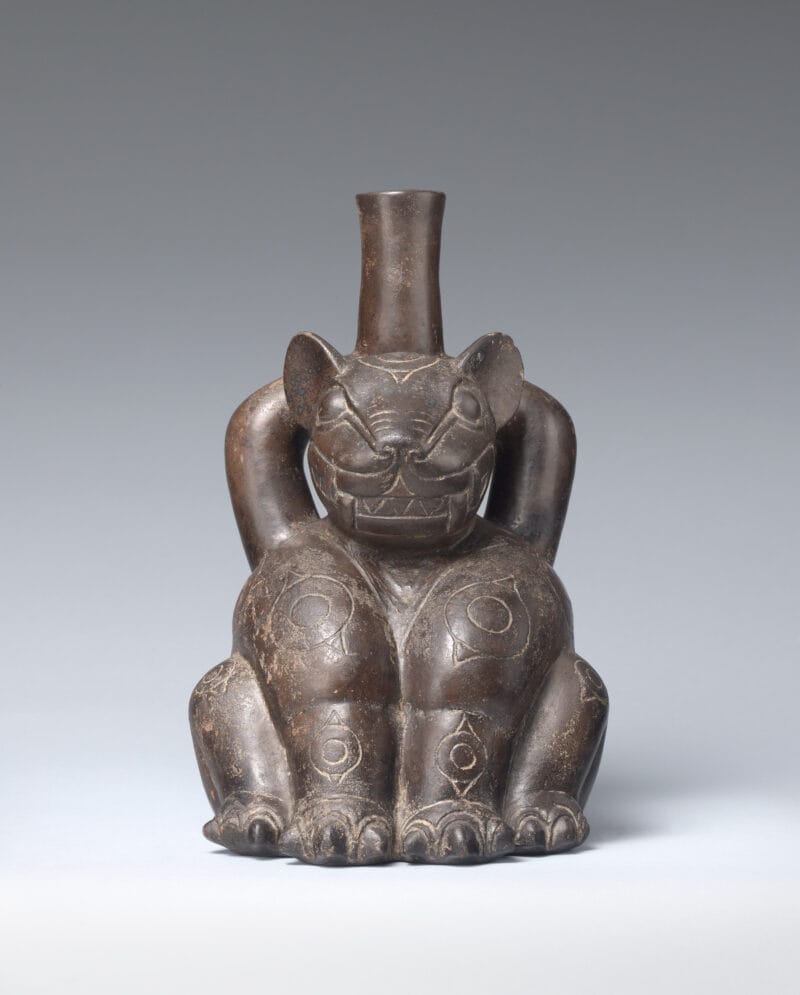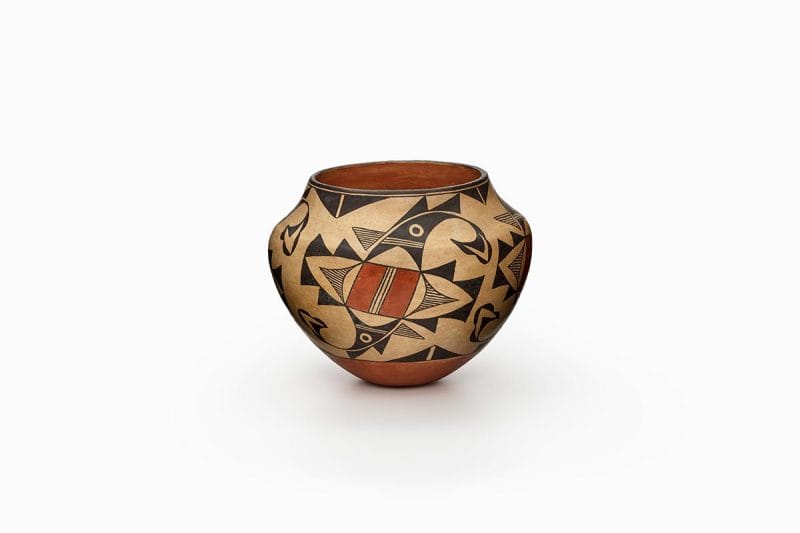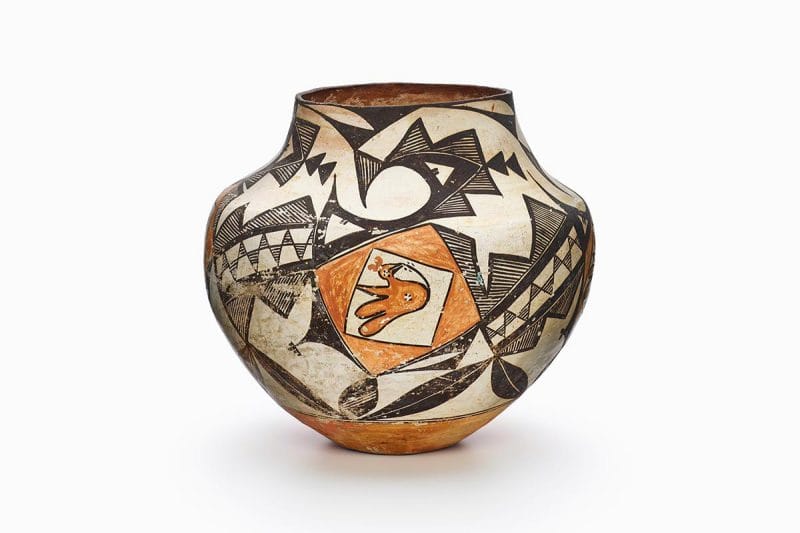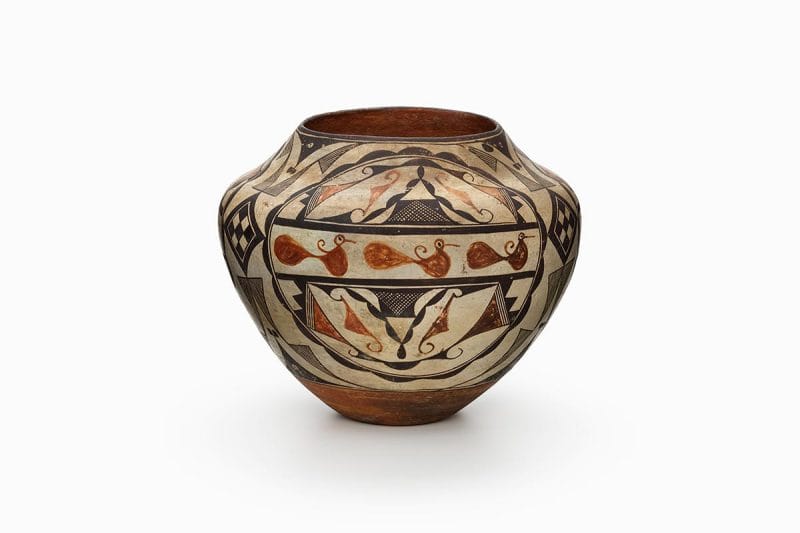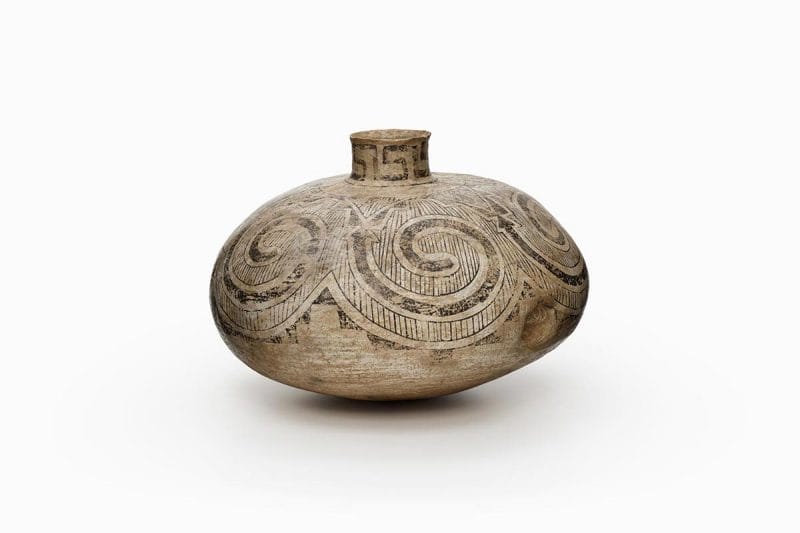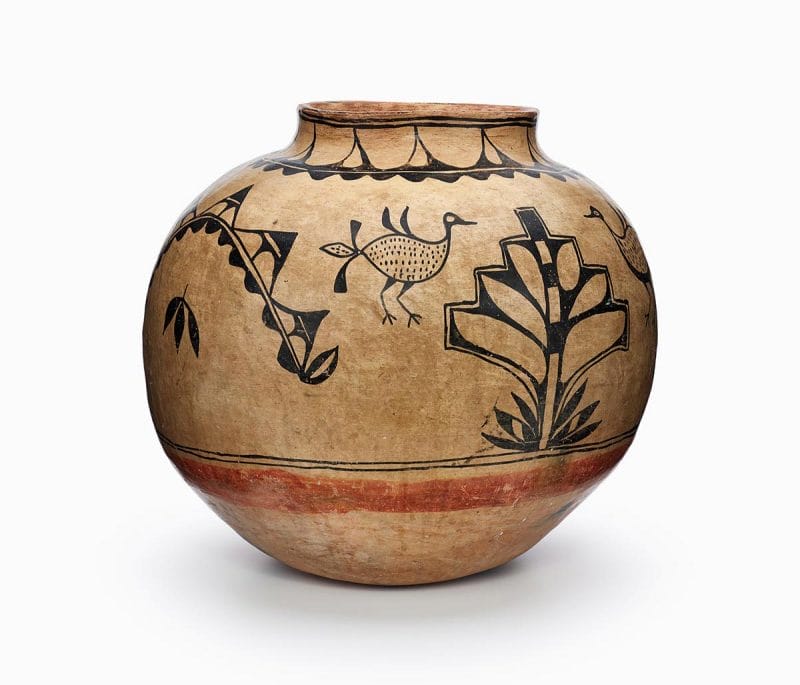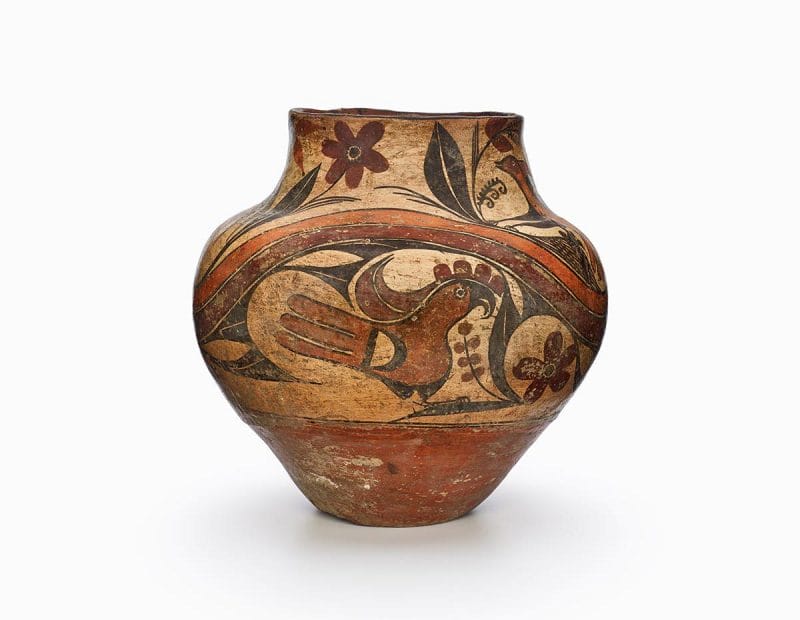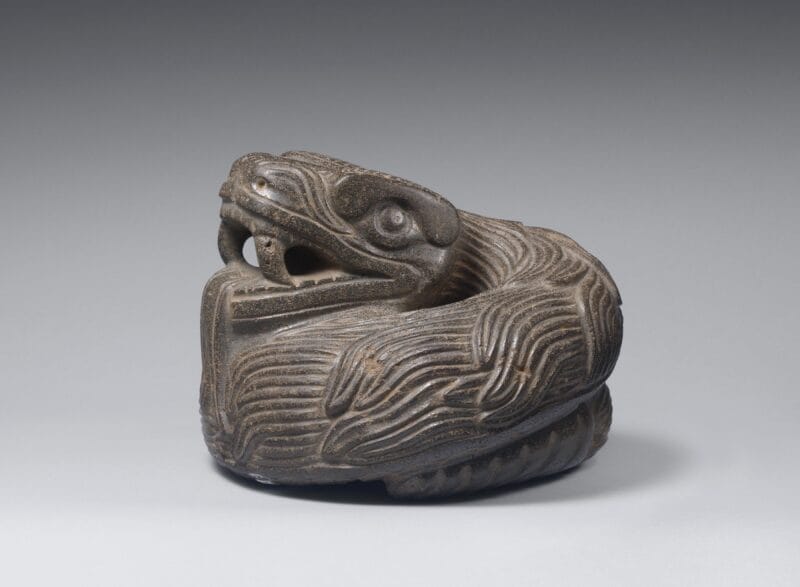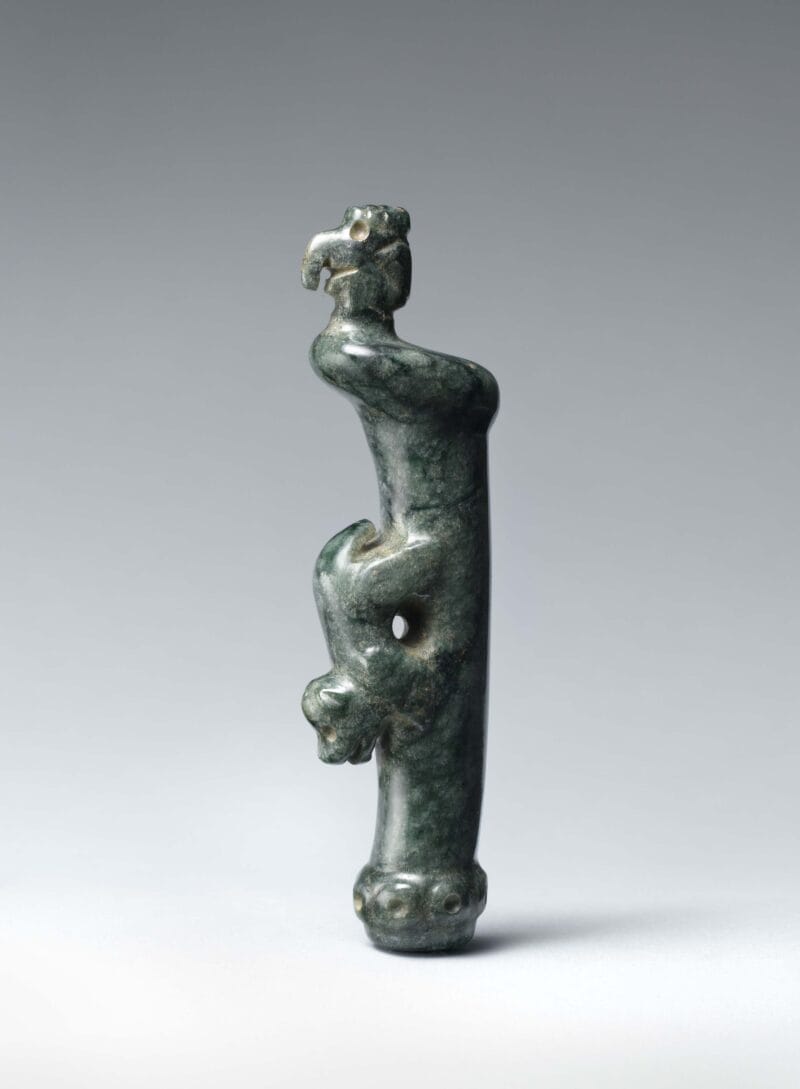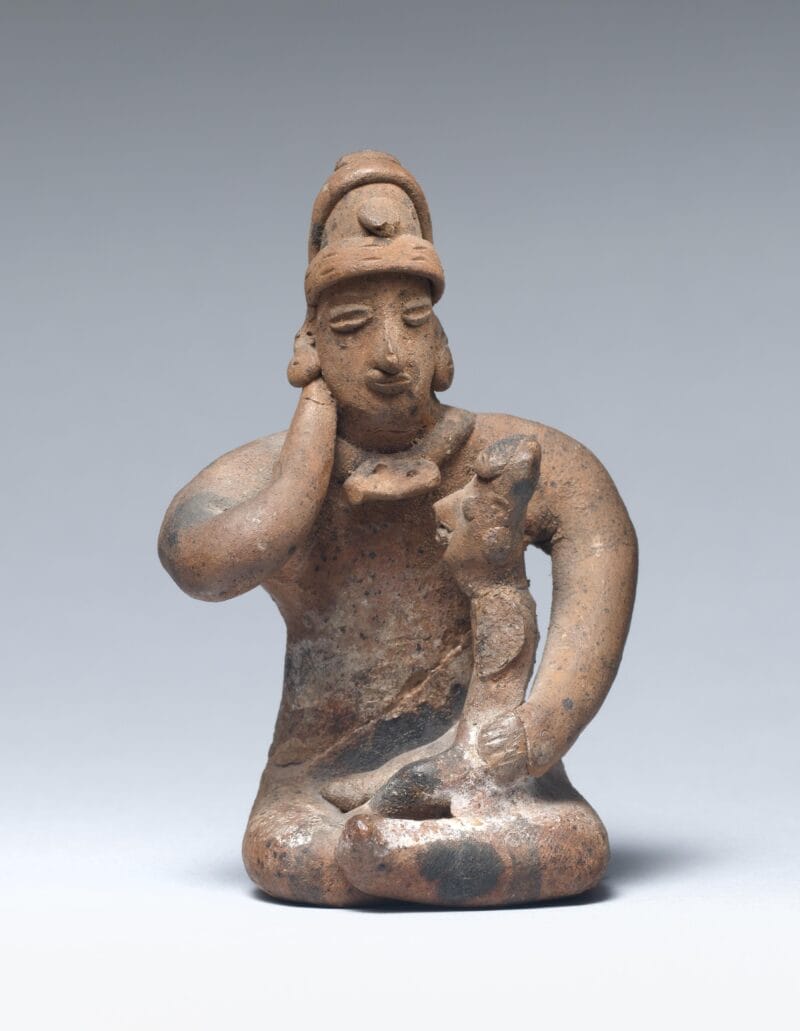
About the Object
This ceramic male figure made from a mold has been slipped in red paint and polished, which indicates that it was created in the middle to later phase of this artistic tradition in the middle formative period. The work is holding a rattle and fan, indicating that the figure is dancing. The figure is also clad with loincloth around the waist, large hoop earrings, a necklace, and headdress showing canine features. Interestingly, within pre-colonial Jalisco, dogs were raised in part as a source of protein.
Additional Information
Jalisco, like many cultures across western Mexico, developed distinct traditions but maintained contact and trade with other areas of Mesoamerica. For example, coastal sites may have been producing materials to trade extensively with the city of Teotihuacan in central Mexico. This work was likely created in what archaeologists call the “late formative period.” These molded hollow figures are associated with shaft tombs. However, because of extensive looting, much remains unknown about how works like this may have been utilized, though the canine contribution may demonstrate a link to shamanism.
Private Collection, New Mexico;
[Ron Messick Fine Arts, Santa Fe, NM];
The Jan T. and Marica Vilcek Collection, 2004-2010;
Gift to The Vilcek Foundation, 2010;
Related Objects
You may also be interested in
Juan Pablo Contreras composes classical music with the sounds of Mexico

Felipe Baeza

Juan Pablo Contreras

